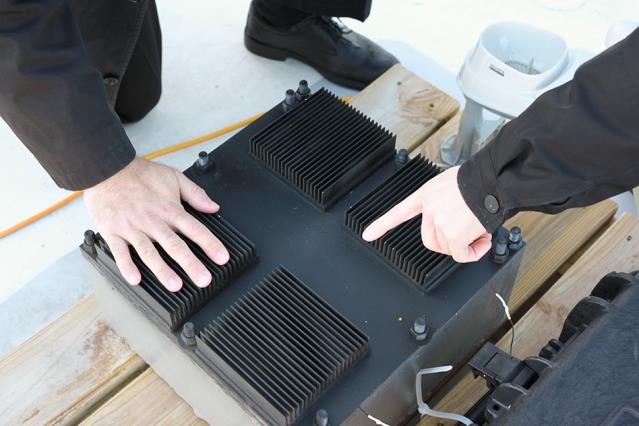This thermal resonator could enable continuous, years-long operation of remote sensing systems, for example, without requiring other power sources or batteries, the researchers said.
While the power levels generated by the new system so far are modest, the advantage of the thermal resonator is that it does not need direct sunlight; it generates energy from ambient temperature changes. That means it is unaffected by short-term changes in cloud cover, wind conditions, or other environmental conditions, and can be located anywhere that’s convenient — even underneath a solar panel where it could draw away waste heat, allowing the solar panel to be more efficient, the researchers said.
In tests, the thermal resonator is said to outperform an identically sized, commercial pyroelectric material — an established method for converting temperature fluctuations to electricity — by a factor of more than three in terms of power per area.
The researchers realised that to produce power from temperature cycles, they needed a material that is optimised for thermal effusivity — a property that describes how readily the material can draw heat from its surroundings or release it. Thermal effusivity combines the properties of thermal conduction and thermal capacity. In most materials, if one of these properties is high, the other tends to be low. Ceramics, for example, have high thermal capacity but low conduction.
To get around this, the team created a carefully tailored combination of materials. The basic structure is a metal foam, made of copper or nickel, which is then coated with a layer of graphene to provide even greater thermal conductivity. Then, the foam is infused with a kind of wax called octadecane, a phase-change material, which changes between solid and liquid within a particular range of temperatures chosen for a given application.

In response to a 10°C temperature difference between night and day, a sample of the material produced 350mV of potential and 1.3mW of power — enough to power simple, small environmental sensors or communications systems.
“The phase-change material stores the heat,” says Anton Cottrill, the study’s lead author, “and the graphene gives you very fast conduction” when it comes time to use that heat to produce an electric current.
Essentially, one side of the device captures heat, which then slowly radiates through to the other side. One side always lags behind the other as the system tries to reach equilibrium. This perpetual difference between the two sides can then be harvested through conventional thermoelectrics.
While the initial testing was done using the 24-hour daily cycle of ambient air temperature, tuning the properties of the material could make it possible to harvest other kinds of temperature cycles, such as the heat from the on-and-off cycling of motors in a refrigerator, or of machinery in industrial plants.
Such systems could also provide low-power, long-lasting energy sources for landers or rovers exploring remote locations, including other moons and planets. For such uses, the researchers said that much of the system could be made from local materials rather than having to be premade.





